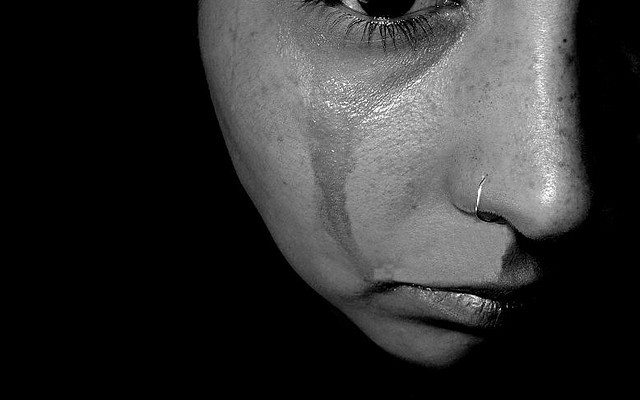
News
You Don’t Hear About This Side of Adoption
Early this fall, a Reuters piece on the practice of “rehoming” children in failed adoptions took the world by storm. The exposé was the product of an 18-month study by investigative journalist, Megan Twohey. Originally, a term for transferring the ownership of animals, “rehoming” is used to describe what happens when a family decides to give up a child they had adopted, for whatever reason. Usually the children that are moved around like this are from another country, were adopted as adolescents or teenagers, and have some behavioral problems.
Twohey was researching international adoption when she discovered the underground “rehoming” network in the United States that has developed as a result of the Internet. Families that were struggling with their children began to create Facebook, Yahoo, and other groups to talk about their issues, and often to find another place for their child to live. According to Twohey, these families are desperate, at a complete loss, and are unwilling to go through state-sanctioned procedures or social workers for fear of being forced to give up their other children, usually biological. Twohey explores these black markets, and describes the horror stories that many rehomed children go through. Her piece focuses somewhat on a woman named Nicole Eason, who had both of her biological children removed years ago, and then took in at least 5 rehomed children. She provided unsafe living conditions and may have sexually abused some of them. She also at one point brought a 5-year-old boy into a home with a man who would later be convicted of distributing child pornography. A feeling of desperation runs throughout Twohey’s piece—these parents turn to such abhorrent actions because they are at a complete loss. They did not realize that their children would be such a problem when they were adopted, sometimes because of misinformation from the adoption agency. At one point, Twohey anonymously quotes a parent who shows just how desperate she was, stating “I would have given her away to a serial killer, I was so desperate.”
The Reuters exposé led to a global firestorm . American adoptive parents and adoptees were horrified that families would do so. The nations from which many of these children come, such as Russia, were outraged and used such evidence to justify a continued adoption ban.
Now a new, equally horrifying story has broken. This week, Slate released a piece by Kathryn Joyce that focused on a girl named Hana Williams, adopted from Ethiopia. Hana Williams was adopted into a large fundamentalist family in Washington state. They believed in harsh discipline for their children, and in many ways were cut off from the world outside their religious community. Hana was systematically abused, excluded from the family, and no effort was made to understand her behavior. She died on May 11, 2011, after months of being abused and being left outside all night. Joyce describes how this is an extreme example of a story that is happening all over the United States. Adoption has become increasingly prevalent in the evangelical community; usually a choice for families after the mothers can no longer have more biological children of their own. One of families featured in Joyce’s story may have had up to 32 children, 24 of who were adopted.
The obvious questions are: how could these incidents have legally been allowed to happen? How is it legal for parents to just give their children away on an online message bored? How is it legal for a family to adopt 24 children?
The answer is that adoption laws in this country are vague at best, and horridly outdated. Parents, be they adoptive or biological, are allowed to appoint guardians for their children. Within state lines, there are almost no constraints on this process. A family can sign a power of attorney document, declaring someone else as their child’s guardian. Such a document was traditionally used to declare a family member, or a friend, a guardian when needed. But as it becomes increasingly easier to connect with people through the Internet, this ability is being abused. People are giving their children to complete strangers. There are laws that make it more difficult to do this if it involves transfers over state lines: The Interstate Compact on Placement of Children requires notice if a child is rehomed from one state to another. But it’s rarely followed—if authorities are not notified, they have no reason to think a child may be being transferred. And there are no mechanisms in case to ensure adoptive families are checked up on after the adoption—after all at that point their adoptive children are viewed legally the same as their biologic children.
As for rules about how many children a family can have….there really are none. The decision about whether to allow an adoption is usually left to the agency. If an agency decides that a home is appropriate, and there’s no indication that there are any laws being broken or abuse being waged, a family is free to adopt as many children as they’d like, just as they are allowed to have as many biological children as they want. There are laws about how many children may be in a foster home, but when private agencies are appraising families, they are allowed to use their own discretion. There are of course, instances in which large families work well for children and end up as a nurturing and healthy household. Take this South Carolina family of 40 for example, where 33 children have been adopted and all seem to be successful, well-adjusted, and loved. There are the Duggars, probably the most famous large family in the US, who have 19 kids. While all are biological, they are a good example of a large, fundamentalist family doing well. The issue at play here is that these large families that continually adopt allow for less individual attention to each child, which can be especially problematic for children who need specialized attention to deal with problems from their past. When a family is not able to do so, they run the risk of bad behavior, and may feel like they have no choice but to rehome their child or turn to abuse.
The stories in these two articles, as well as countless others that have come to light in the past few months depict children who are falling through the cracks. Children who should be protected by law, but our legal system is failing them. It’s hard to imagine that being adopted could lead to worse conditions than being in an orphanage, but it’s possible. Now that the US knows this is happening, it is our lawmakers’ responsibility to put a stop to it. Children should not be traded like animals. Children should not be placed into a home where they cannot possibly receive the attention that they deserve. These children deserve better, and it is the United States’ responsibility to make sure that they do receive better.
—
Anneliese Mahoney (@AMahoney8672) is Lead Editor at Law Street and a Connecticut transplant to Washington D.C. She has a Bachelor’s degree in International Affairs from the George Washington University, and a passion for law, politics, and social issues. Contact Anneliese at amahoney@LawStreetMedia.com.
Featured image courtesy of [madamepsychosis via Flickr]








Comments